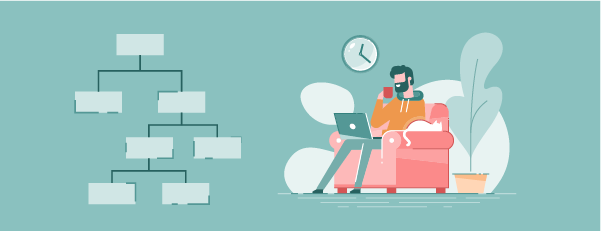
How many hours do you spend in your week building and managing complex organizational charts? Once they are built, how many times are you going back to make edits, change owners, and prepare for another meeting? When you take a step back and look at it, managing ownership structures can be inefficient. Not only that, but the need to track and manage updates can leave room for human error and risk.
The best way to work more efficiently and support the growth of your organization is by investing in org chart software. Give yourself a platform to keep up with all the details that you would typically keep in a spreadsheet and PowerPoint. By doing so, you are giving yourself the opportunity to un-silo your data and have everything in one, secure place.
However, not all software is built the same. There are important features your org chart software should include to help you manage your ownership structures efficiently and securely. Here are a few best practices and what to look for when choosing an org chart software:
- Will the software make your job easier? Make sure you find one that won’t complicate the process even more by offering a bunch of gimmicks. Look for a platform that automates the process for you. What do we mean by automation? We mean, all you need to do is click a few buttons, and your org chart is built. A goal here is to keep all your ownership information in one place, allowing you to change it whenever you need to easily and quickly. From this information you are storing, your org charts can be built, and as updates to corporate and ownership data are made, it is automatically reflected in your org charts.
- Accessibility is another important feature high on our list. More than likely, you are not the only one in your company who will need to make edits or access your org charts. Find a secure solution that allows multiple users without an added cost. A bonus is if the platform allows sharing options as well as printing, making it easy to share charts during meetings.
- While it’s important to visualize company structures in your org chart, it’s just as important to be able to customize to fit your organization’s needs. An org chart platform should allow you to choose what you want to be shown on your org chart. Being able to choose what information you would like to include, and hide is convenient when you are sharing with an accountant or a client, you are only providing them with the details they need and nothing more. Another customization feature you may want to look into is color coordination and formatted lines. This can be super helpful when it comes to reading your org charts and quickly identifying the type of entity or relationship between entities.
- Bringing in a new platform may not seem worth it if it doesn’t seem like it could truly help your organization. We suggest finding one that would be easy to implement across your organization and benefit multiple departments. Having all your entity information in one place can help departments easily work with one another and off of the same live data. Look for software that allows for multiple users and the ability to securely manage corporate data, documents, and tools to visualize that data easily.
Org charts don’t have to be complicated. Following these steps can help you to be on your way to a more straightforward process for you and your colleagues.

